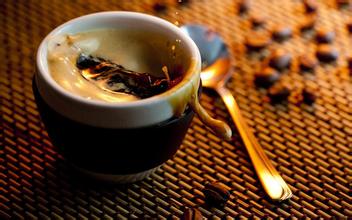What do you call roasted coffee beans? introduction to the degree of coffee roasting technology

Coffee roasting is divided into the following degrees:
1. Very shallow baked Light Roast
Coffee roasting technology
In the mildest baking method, the beans are yellowish brown and the aroma and concentration are mild and light, which can be used as a standard for identification in the early stages of baking.
2. Shallow baking / cinnamon baking Cinnamon Roast
As the name suggests, the beans are cinnamon-colored, slightly thicker than very light roasted, and refreshing in taste.
3. Medium baked Medium Roast
The beans are chestnut, sour and bitter have been released, its taste is deeper than light roasting, fresh aroma, mild taste, suitable for brewing American coffee.
4. Medium and deep baked High Roast
The beans are tea-brown and give people a slightly stronger impression than medium-baked beans. The aroma and color are balanced, and the bitter taste is stronger than the sour taste.
5. Deep baking / city baking City Roast
The beans are tea-brown, with a balance between sour and bitter taste, mellow and quite baked.
VI. Very Deep Baking / Deep City Baking Full City Roast
The beans are dark brown, sour and bitter. Because of bitterness, it is suitable for iced coffee.
7. French baking French Roast
Beans are dark brown, because deep roasting, beans contain fat floating to the surface, appears to be bright, bitter, roasted flavor is very strong, suitable for coffee Oulei.
8. Italian baking Italian Roast
Beans are nearly black, bitter and full-bodied, making them suitable for brewing espresso and cappuccinos.
According to the different heat sources used, the roasting of coffee can be divided into gas roasting, charcoal roasting and infrared roasting, of which the most common one is gas roasting, the temperature is controlled between 200 and 300 degrees, and the temperature should be adjusted from time to time as needed. Commercial baking tools are usually large machines, usually cylindrical containers with a diameter of more than two meters, with a heat source at the bottom, and a mixing tool inside the container that constantly stirs the coffee beans, while the beans are easy to rotate. The purpose is to make the coffee beans heated evenly.
Important Notice :
前街咖啡 FrontStreet Coffee has moved to new addredd:
FrontStreet Coffee Address: 315,Donghua East Road,GuangZhou
Tel:020 38364473
- Prev

Introduction to the production method of filling powder quality and taste of Italian coffee
Espresso is also a key point, that is, uniform, the powder should be uniform in the handle, hot water in the small space near the outlet to gather about 9 Pa of pressure, to rush out of the shackles of pressed powder, loose places will flow too much to cause excessive extraction, dense places will flow less to cause insufficient extraction, then all the efforts above are bullshit that the powder bowl is full of 9 points and the limit of powder thickness is thick.
- Next

Introduction to the Grinding degree of Highland Coffee Bean Arabica Price producing area characteristics, Flavor description treatment method
Coffee made from Arabica beans is of higher quality and tastes different than other commercially grown coffee varieties (such as Robusta), and the coffee contains less caffeine. The traditional processing method is to harvest coffee berries manually, peel them on the same day, and use manually selected coffee beans to be ground and boiled after baking. With fresh milk.
Related
- Beginners will see the "Coffee pull flower" guide!
- What is the difference between ice blog purified milk and ordinary milk coffee?
- Why is the Philippines the largest producer of crops in Liberia?
- For coffee extraction, should the fine powder be retained?
- How does extracted espresso fill pressed powder? How much strength does it take to press the powder?
- How to make jasmine cold extract coffee? Is the jasmine + latte good?
- Will this little toy really make the coffee taste better? How does Lily Drip affect coffee extraction?
- Will the action of slapping the filter cup also affect coffee extraction?
- What's the difference between powder-to-water ratio and powder-to-liquid ratio?
- What is the Ethiopian local species? What does it have to do with Heirloom native species?

